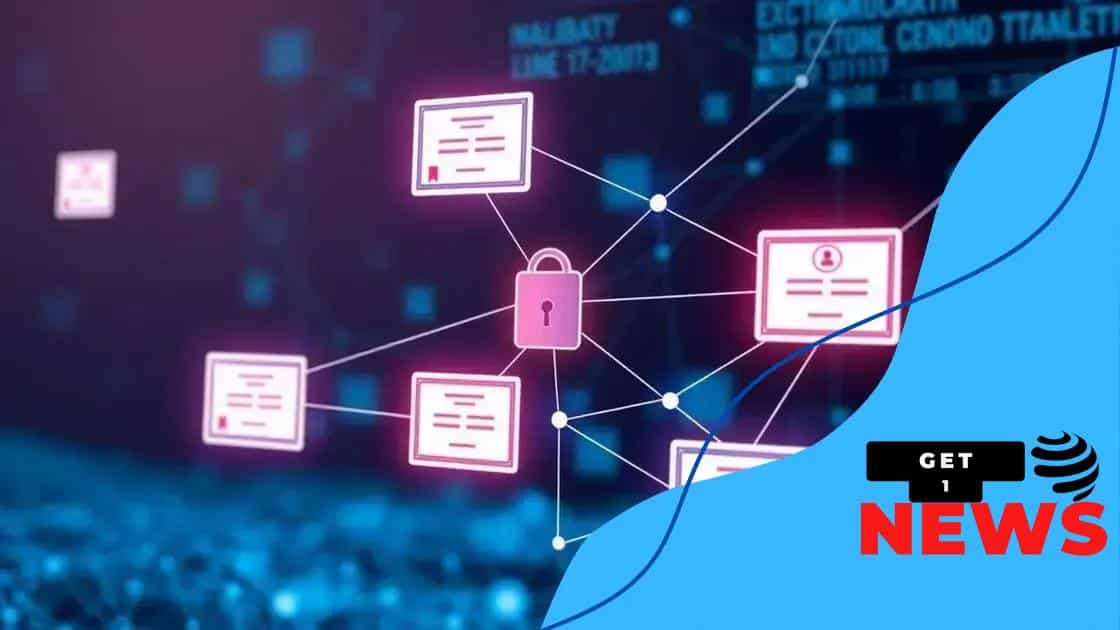Blockchain securing academic records: A game changer

Blockchain securing academic records is a transformative technology that prevents diploma fraud by providing an immutable and transparent method for verifying educational credentials.
Blockchain securing academic records could revolutionize how educational credentials are managed, ensuring authenticity and reducing fraud. Imagine a world where your degree is instantly verifiable, making job applications smoother. Curious about how this technology works? Let’s dive in!
Understanding blockchain technology
Understanding blockchain technology is crucial for grasping its application in various fields, including education. At its core, blockchain offers a decentralized, secure method of storing data that is immutable and transparent. This unique structure allows multiple parties to access the same record without the need for a central authority, which is essential for maintaining academic integrity.
Key Features of Blockchain
One of the standout features of blockchain technology is its transparency. Every transaction is recorded on a public ledger that anyone can access. This feature can help educational institutions verify credentials and prevent fraud effectively.
- Decentralization: No single point of failure.
- Immutability: Once recorded, data cannot be altered.
- Security: Advanced cryptography protects information.
- Transparency: All transactions are visible and auditable.
Moreover, the use of smart contracts within the blockchain framework can automate various processes. For instance, institutions can set predetermined conditions for issuing diplomas. When those conditions are met, the diploma is automatically issued without human intervention. This not only saves time but also reduces the possibility of errors in the credentialing process.
How Blockchain Works
The way blockchain works might seem complex, but it can be broken down into simple steps. Every transaction is grouped into blocks, which are then linked to form a chain. A miner validates each block through cryptographic algorithms and consensus protocols. Once validated, the block is added to the chain, ensuring that the data is secure and retrievable for future reference.
In an educational context, this means that information like grades or degrees can be stored securely. Schools can share this data with potential employers without risk of tampering. Such capabilities make the verification process streamlined and less arduous.
By embracing blockchain technology, educational institutions can provide a more reliable way of managing student records while also enhancing trust in their credentials. The potential to transform traditional systems is immense, and as we explore its implications further, the benefits become even clearer.
The importance of securing academic records
The importance of securing academic records cannot be overstated in today’s digital age. With more institutions moving to online platforms, the risk of data breaches and fraud increases. Ensuring that students’ achievements are safe helps maintain the integrity of their credentials.
Why Security Matters
When academic records are compromised, it can lead to serious consequences for students and educational institutions alike. Fraudulent diplomas and altered grades can undermine trust in educational systems. Therefore, protecting these records is crucial for maintaining credibility.
- Prevents diploma fraud and misrepresentation.
- Ensures accurate and verifiable credentials for employers.
- Builds trust between institutions and students.
- Avoids legal and financial repercussions for colleges.
Moreover, enhancing security measures for academic records can foster a sense of safety among students. Knowing that their achievements are protected allows them to focus on their education rather than worrying about the validity of their diplomas. By implementing secure systems, institutions also demonstrate their commitment to student welfare.
Methods to Secure Records
There are several effective methods for securing academic records. Technology plays a crucial role in this process. Schools can use encryption and blockchain technology to improve security. When records are encrypted, they become unreadable without the correct decryption key, thus protecting sensitive information.
Blockchain can provide a unique solution since it offers an immutable record of transactions. Once data is added to the blockchain, it cannot be changed. This makes it incredibly difficult for anyone to manipulate academic records without detection. With advancements in technology, securing records becomes more attainable, paving the way for a safer educational environment.
As the landscape of education continues to evolve, prioritizing the security of academic records remains essential. With the right protocols in place, both students and institutions can reap the benefits of a trustworthy system.
How blockchain can prevent diploma fraud

Understanding how blockchain can prevent diploma fraud is essential in our increasingly digital world. With the rising instances of fraudulent degrees, educational institutions must adopt technologies that ensure the authenticity of their credentials. Blockchain technology offers a secure and transparent solution to this growing problem.
Combating Fraud with Transparency
One of the primary ways blockchain can help is through its transparency. Each degree issued is recorded on a public ledger that can be accessed by employers and other institutions. This means they can easily verify the authenticity of a diploma without relying solely on the educational institution.
- Each transaction is recorded and time-stamped.
- Immutable data prevents alterations or forgery.
- Decentralized access ensures no single point of control.
- Employers can verify credentials immediately.
When institutions implement blockchain, they create a trust layer. For instance, if a graduate applies for a job, the employer can scan a QR code on the diploma. This leads them directly to the record on the blockchain, confirming its legitimacy in real time. As a result, both parties enjoy greater peace of mind.
Real-World Success Stories
Several universities around the world are already utilizing blockchain to enhance security against diploma fraud. For example, a university might issue a digital diploma linked to a blockchain. This not only verifies the degree but also includes important details, such as the degree’s date of issue and the courses taken.
Such advancements decrease the chances of fraud significantly. When students know their diplomas are securely encoded, they feel proud of their achievements. They can confidently pursue job opportunities, knowing that their records cannot be tampered with.
As educational institutions recognize the value of blockchain, the fight against diploma fraud becomes more effective. By embracing this technology, the future of educational credentials looks promising, ensuring that achievements are rightly acknowledged.
Real-world examples of blockchain in education
Real-world examples of blockchain in education illustrate the transformative power of this technology. Several institutions around the globe are pioneering its use to enhance transparency and efficiency. These examples showcase how blockchain can change the educational landscape dramatically.
Leading Institutions Adopting Blockchain
One prominent example is the University of Edinburgh, which has implemented blockchain to securely issue diplomas. Each diploma is tied to a blockchain record, making it easily verifiable by employers. This innovation not only reduces the risk of diploma fraud but also streamlines the process for graduates seeking employment.
- University of Essex: Offers verified credentials using blockchain.
- IBM and EdX: Collaborate on digital badges for skill verification.
- MIT: Issues digital diplomas on the blockchain for graduates.
Another significant case is the Open University in the UK. They are experimenting with blockchain to manage student records. By using this technology, they can create a secure and lifelong record of student achievements that can be accessed anytime.
Benefits Observed in Pilot Programs
The benefits of these programs are numerous. For instance, students gain better control over their credentials. They can share verified records with potential employers instantly, bypassing traditional verification delays. This immediacy can improve job prospects significantly.
Furthermore, institutions benefit by enhancing their credibility. By using blockchain, they can demonstrate their commitment to integrity, which is critical for attracting students and partnerships. As more institutions embrace this technology, the acceptance of blockchain in education will likely grow.
These real-world applications highlight the significant potential of blockchain to enhance the educational experience. The shift toward using this technology represents a promising future for academic credentialing, ensuring both security and efficiency.
Future trends in academic credential verification
The future trends in academic credential verification are set to evolve significantly, driven by advancements in technology, especially blockchain. As the world moves toward digitization, educational institutions are seeking more efficient and secure ways to validate credentials.
Increased Use of Blockchain
One major trend is the growing adoption of blockchain technology. This technology provides a permanent and tamper-proof record of student achievements. With its decentralized nature, blockchain helps prevent fraud and enhances trust in the verification process. Many institutions are already exploring this option to streamline how they verify degrees and diplomas.
- Real-time verification will become standard.
- More institutions will adopt blockchain to manage records.
- Interoperability between systems will improve.
- Digital wallets for credentials will become common.
Additionally, as blockchain becomes more widespread, students and employers alike will see increased benefits. Graduates will find it easier to share their verified credentials instantly with potential employers. This trend will help reduce hiring times and increase confidence in educational backgrounds.
Integration of Artificial Intelligence
Another emerging trend is the integration of artificial intelligence (AI)
These intelligent systems can cross-reference data from various sources, ensuring that the credentials are legitimate. As AI technology continues to advance, it will play a pivotal role in making credential verification smarter and more reliable. Furthermore, digital platforms will likely be developed to serve as centralized hubs for educational records. These platforms can use both blockchain and AI technologies to authenticate and store credentials securely. This change will reduce paperwork and streamline processes for both students and institutions. The direction in which academic credential verification is heading is promising. By integrating innovative technologies like blockchain and AI, educational institutions can ensure that records remain secure and easily verifiable. The potential for enhanced trust and efficiency makes these trends vital to the future of education. In conclusion, the future of academic credential verification is bright, with exciting advancements on the horizon. Technologies like blockchain and artificial intelligence promise to improve how we secure and verify educational achievements. As more institutions adopt these innovations, we can expect a more transparent and efficient verification process. This evolution not only enhances trust but also provides students with greater control over their academic records. Overall, embracing these technologies will pave the way for a safer and more robust educational landscape. Blockchain creates an immutable record of credentials that prevents tampering and fraud, ensuring authenticity. AI assists in processing and analyzing records, improving the accuracy and efficiency of the verification process. Yes, blockchain technology allows students to share verified credentials quickly and securely with potential employers. Employers gain confidence knowing they can instantly verify candidates’ degrees, which speeds up hiring and reduces fraud risk.FAQ – Frequently Asked Questions about Blockchain in Education
How does blockchain enhance academic credential security?
What role does artificial intelligence play in verifying credentials?
Can students easily share their academic credentials?
What benefits do employers get from using blockchain in credential verification?





